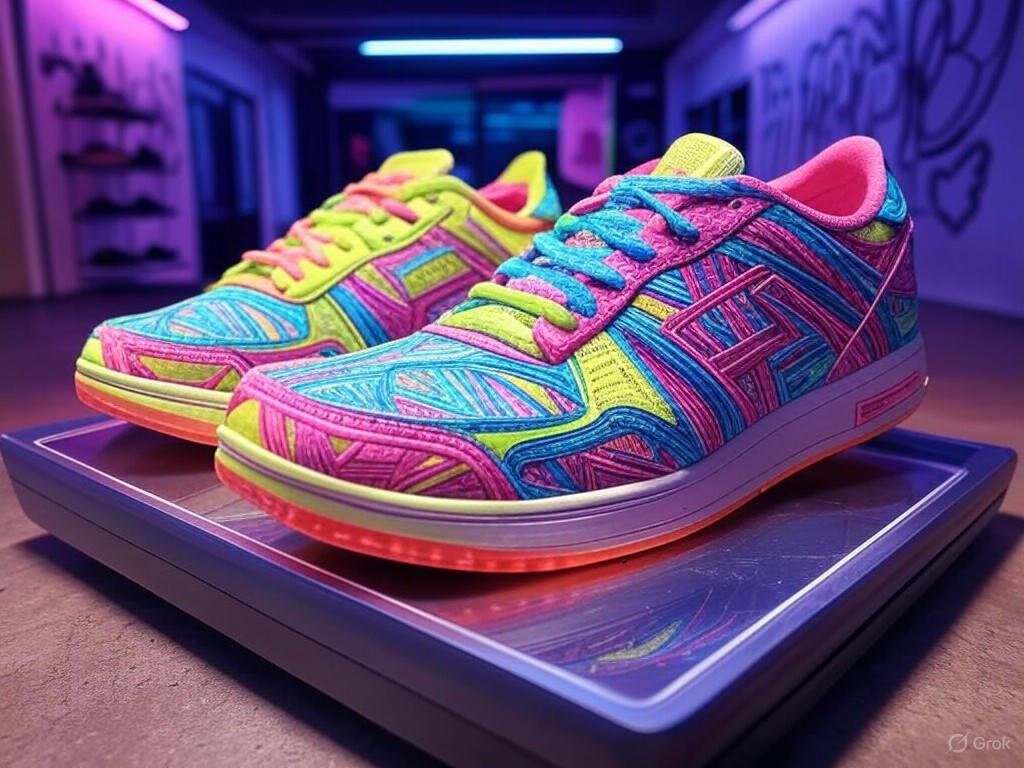In today’s fast-paced, ever-evolving economy, finding creative things to sell to make money is a game-changer for entrepreneurs, side hustlers, and anyone looking to boost their income. Whether you’re an artist, a tech enthusiast, or someone with a knack for spotting trends, there’s a world of opportunities waiting to be tapped. This guide dives deep into innovative, practical, and profitable ideas for products you can sell, drawing from market trends, consumer demands, and creative ingenuity. From handmade crafts to digital goods, we’ll explore a range of options to spark your entrepreneurial spirit and help you turn your ideas into cash.
Why Selling Creative Products Matters

The rise of e-commerce platforms like Etsy, Shopify, and Amazon has made it easier than ever to turn creative ideas into profitable ventures. Consumers today crave unique, personalized, and sustainable products that stand out from mass-produced goods. By focusing on creativity, you can carve out a niche, build a loyal customer base, and generate consistent income. The key is to identify products that align with your skills, passions, and market demands while offering something fresh and exciting.
Below, I’ve compiled a comprehensive list of creative things to sell to make money, each backed by insights into why they work and how you can get started. These ideas range from low-investment crafts to tech-driven innovations, ensuring there’s something for everyone.
1. Handmade Jewelry with a Modern Twist
Jewelry remains a timeless product, but the market is saturated with generic designs. To stand out, focus on creating pieces that tell a story or incorporate trending materials like resin, recycled metals, or gemstones with unique cuts. For example, minimalist necklaces with customizable charms or earrings inspired by nature are hot sellers in 2025.
Why It Works: Handmade jewelry appeals to consumers seeking individuality. Platforms like Etsy report that personalized and eco-friendly jewelry sees higher engagement, with buyers willing to pay a premium for unique designs.
How to Start:
- Learn Basic Techniques: Take online courses on platforms like Skillshare to master wire-wrapping, beading, or resin pouring.
- Source Materials: Use sustainable suppliers like Rio Grande for ethically sourced metals or gemstones.
- Market Your Brand: Create a cohesive Instagram aesthetic with high-quality photos and share the story behind each piece to connect with customers.
Profit Potential: A single pair of custom earrings can sell for $20-$50, with material costs often under $5. With consistent sales, you could earn $500-$2,000 monthly on platforms like Etsy.
Read more: AI Collective Review – Insights into Collaborative Intelligence
2. Eco-Friendly Home Décor
Sustainability is more than a buzzword—it’s a movement. Consumers are increasingly drawn to eco-friendly home décor, such as upcycled furniture, macramé wall hangings, or planters made from recycled materials. Think wooden coasters engraved with minimalist designs or hand-painted ceramic vases.
Why It Works: The push for sustainability has created demand for products that are both beautiful and environmentally conscious. According to a 2024 Nielsen report, 73% of consumers are willing to pay more for sustainable goods.
How to Start:
- Upcycle Materials: Source wood, glass, or fabric from thrift stores or local recycling centers.
- Design with Trends in Mind: Research Pinterest for popular décor styles, like bohemian or Scandinavian minimalism.
- Sell Locally and Online: Use local markets or platforms like eBay and Etsy to reach a broader audience.
Profit Potential: A set of four upcycled coasters can sell for $25-$40, with material costs as low as $2-$5. Scaling to larger items like furniture can yield profits of $100-$500 per piece.
3. Digital Art and Printables
The digital marketplace is booming, and digital art—such as wall art printables, planner templates, or social media graphics—offers a low-overhead way to make money. You create the design once, and it can be sold repeatedly without additional production costs.
Why It Works: Digital products are scalable and require no inventory. Etsy’s 2025 seller trends highlight a 30% increase in demand for printables, especially for planners and educational tools.
How to Start:
- Design Tools: Use free or affordable software like Canva or Adobe Illustrator to create high-quality designs.
- Niche Down: Focus on specific audiences, like teachers needing classroom printables or brides looking for wedding planners.
- Optimize Listings: Use keyword-rich titles like “Printable Weekly Planner for Busy Moms” to boost visibility on Etsy or Gumroad.
Profit Potential: A single printable can sell for $5-$15. With just 50 sales a month, you could earn $250-$750 with minimal ongoing effort.
Read more: MegaSuite review – An In-Depth Analysis
4. Custom Pet Products
Pet owners are a passionate market, spending billions annually on their furry friends. Creative pet products, like personalized pet portraits, custom bandanas, or engraved pet tags, are in high demand.
Why It Works: The pet industry is projected to grow to $150 billion by 2030, according to Bloomberg. Unique, personalized items resonate with pet owners who see their pets as family.
How to Start:
- Tap Into Your Skills: If you’re an artist, offer digital or hand-painted pet portraits. If you sew, create custom pet accessories.
- Partner with Local Businesses: Work with pet stores or groomers to promote your products.
- Leverage Social Media: Share adorable pet photos on Instagram or TikTok to drive traffic to your online store.
Profit Potential: A custom pet portrait can sell for $50-$200, while simpler items like bandanas can go for $10-$20. Monthly profits can range from $500 to $3,000 with a strong online presence.
5. Subscription Boxes for Niche Hobbies
Subscription boxes are a proven way to build recurring revenue. Create curated boxes for niche hobbies like candle-making, knitting, or urban gardening. Each box could include supplies, tutorials, and exclusive items.
Why It Works: Subscription models ensure steady income and foster customer loyalty. The global subscription box market is expected to reach $65 billion by 2027, per Market Research Future.
How to Start:
- Identify a Niche: Research underserved hobbies on Reddit or Pinterest to find passionate communities.
- Source Products: Partner with wholesalers or create your own items to keep costs low.
- Build a Brand: Use Shopify to set up a subscription service and promote it through targeted ads on Facebook.
Profit Potential: A $30 monthly box with 100 subscribers generates $3,000 in revenue. After $10-$15 per box in costs, you could net $1,500-$2,000 monthly.
Read more: 10 Surprising Extra Ways to Make Money Online – Boost Your Income Now!
6. Handcrafted Candles and Soaps

Candles and soaps are evergreen products, but creativity sets you apart. Experiment with unique scents, shapes, or packaging—like candles in vintage teacups or soaps with embedded botanicals.
Why It Works: The global candle market is valued at $7 billion, with artisanal products gaining traction for their aesthetic appeal. Soaps with natural ingredients also appeal to health-conscious buyers.
How to Start:
- Learn the Craft: Watch YouTube tutorials to master candle pouring or cold-process soap making.
- Focus on Branding: Use eco-friendly packaging and catchy names like “Lavender Moon Glow” to attract buyers.
- Sell at Markets: Combine online sales with local craft fairs for maximum exposure.
Profit Potential: A single candle can sell for $15-$30, with material costs around $3-$5. Selling 100 candles a month could yield $1,000-$2,500 in profit.
7. Upcycled Fashion and Accessories
Fashion lovers are embracing sustainable clothing, making upcycled fashion a lucrative niche. Turn old denim into patchwork bags, embroider vintage tees, or create statement hair accessories from fabric scraps.
Why It Works: The secondhand clothing market is projected to hit $77 billion by 2025, per ThredUp. Unique, handmade pieces appeal to eco-conscious and trend-savvy shoppers.
How to Start:
- Source Materials: Shop thrift stores or use fabric scraps from local tailors.
- Develop a Signature Style: Focus on bold, one-of-a-kind designs to stand out.
- Sell on Depop or Poshmark: These platforms cater to younger audiences who love unique fashion.
Profit Potential: A single upcycled bag can sell for $40-$100, with material costs under $10. Consistent sales could generate $1,000-$4,000 monthly.
8. Educational Kits for Kids
Parents and educators are always on the lookout for engaging, educational products for kids. Create DIY science kits, art projects, or storytelling games that spark creativity and learning.
Why It Works: The global educational toy market is growing at 8% annually, driven by parents seeking screen-free activities. Kits that combine fun and learning are especially popular.
How to Start:
- Research Trends: Check Amazon’s best-seller lists for popular educational toys.
- Create Prototypes: Use affordable materials like cardboard, paints, and printable instructions.
- Market to Parents: Use Pinterest and parenting blogs to reach your target audience.
Profit Potential: A $25 kit with $5 in materials can yield $20 profit per sale. Selling 50 kits a month generates $1,000 in profit.
9. Custom Tech Accessories
With technology being a constant in our lives, custom tech accessories—like phone cases, laptop sleeves, or cable organizers—are in high demand. Add a creative twist with hand-painted designs or 3D-printed patterns.
Why It Works: The global tech accessories market is worth $250 billion, with consumers seeking personalized options to express their style.
How to Start:
- Invest in Tools: A Cricut machine or 3D printer can help create professional-grade products.
- Offer Customization: Let customers choose colors, patterns, or engravings.
- Sell on Redbubble: This platform handles production and shipping, letting you focus on design.
Profit Potential: A custom phone case sells for $20-$40, with production costs around $5-$10. Monthly profits can range from $500 to $2,000.
10. Niche Food Products
If you love cooking, consider selling niche food products like artisanal hot sauces, spice blends, or vegan baked goods. Focus on unique flavors or dietary needs, like gluten-free or keto-friendly options.
Why It Works: The specialty food market is growing as consumers seek bold flavors and health-conscious options. Small-batch products have a premium appeal.
How to Start:
- Check Regulations: Research local cottage food laws to ensure compliance.
- Develop Recipes: Experiment with unique flavor profiles, like smoked chili hot sauce.
- Sell Locally and Online: Start at farmers’ markets and expand to Shopify or Amazon.
Profit Potential: A $10 jar of hot sauce with $2 in materials yields $8 profit. Selling 200 jars monthly generates $1,600 in profit.
Tips for Success in Selling Creative Products
- Know Your Audience: Use tools like Google Trends or social media analytics to understand what your target market wants.
- Build a Strong Brand: Invest in professional photos, a memorable logo, and consistent messaging across platforms.
- Leverage SEO: Optimize product listings with keywords like “unique handmade gifts” or “eco-friendly home décor” to rank higher on Etsy or Google.
- Engage with Customers: Respond to inquiries quickly and encourage reviews to build trust.
- Scale Smartly: Start small, test your products, and reinvest profits into better tools or marketing.
Overcoming Challenges
Selling creative products isn’t without hurdles. High competition on platforms like Etsy requires standout branding and quality. Shipping costs can eat into profits, so consider offering digital products or bundling items to reduce expenses. Finally, time management is key—balance creating, marketing, and customer service to avoid burnout.
Final Thoughts
Turning your creativity into a profitable business is not only possible but also incredibly rewarding. Whether you’re crafting jewelry, designing digital printables, or curating subscription boxes, the key is to combine your unique skills with market demand. By staying authentic, leveraging trends, and building a strong online presence, you can turn your creative passion into a thriving income stream. Start small, experiment, and watch your ideas grow into something extraordinary.
What’s your favorite creative product idea? Let me know in the comments, and happy selling!






